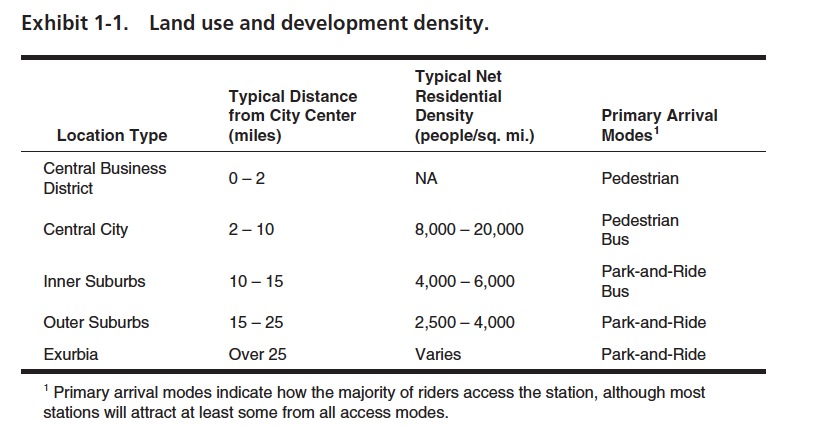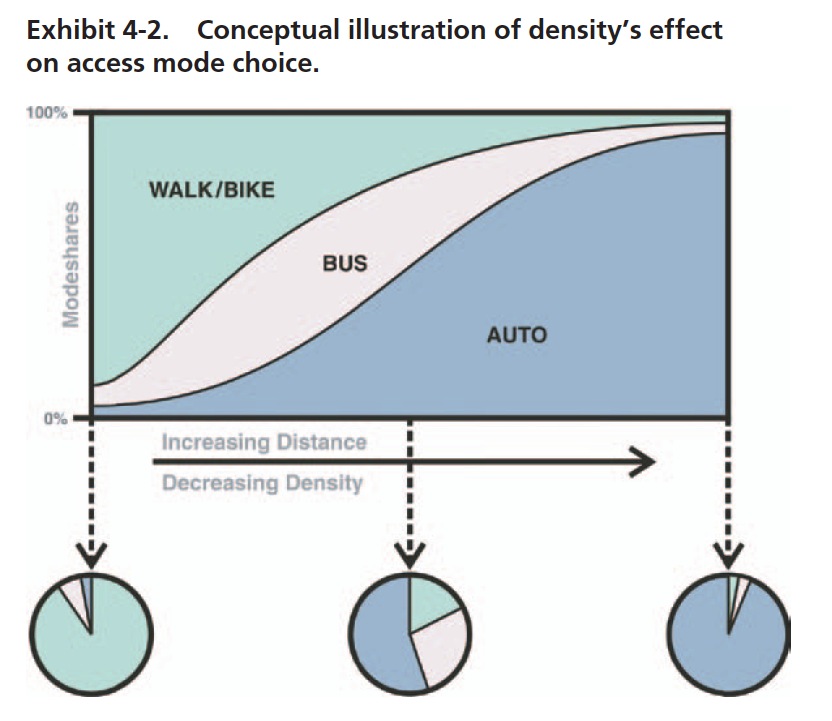TRANSPORTATION RESEARCH BOARD
Introduction
This report presents guidelines for providing access to rapid transit stations, describes a station access planning process, and provides a high-level station access planning tool. The guidelines, process, and planning tool are based on a detailed review of available literature and transit agency practices, as well as case studies conducted during the course of the research. The materials are intended to aid the many groups involved in planning, developing and improving station access. These groups include public transportation and highway agencies, planners, developers, and affected citizens.
The guidelines and planning tool cover access to transit stations for high-capacity transit services, including commuter rail, heavy rail transit, light rail transit, and bus rapid transit. These services are considered as “rapid transit” in the discussion throughout the guide.
Background
Access to rapid transit service in the early years of the twentieth century was mainly as pedestrians. Stations were closely spaced (one-quarter to one-half mile), enabling passengers to easily reach stations. Over the years, bus transit access—usually on intersecting streets—became common in older rapid transit systems. Several systems have free or low-cost transfers to the rapid transit lines. Transit-Oriented Development (TOD) emerged around many stations.
Extensive suburbanization in post–World War II America resulted in low-density development surrounding the central city. Rapid transit development—both along older rapid transit lines (i.e., “legacy” lines) and new lines—involved wider station spacing (one to two miles) and higher line-haul speeds. Station access became more complex and was increasingly dominated by automobile access and large park-and-ride facilities.
Key Issues
Several issues underlie contemporary rapid transit station access planning:
- What is the best way or “process” for station planning and development?
- Which groups should be included in this planning process?
- What travel modes should be accommodated?
- How do development densities and land use patterns affect the use of various access modes?
- How can station ridership and access modes use be estimated?
- What are the likely effects of parking on station ridership?
- How can the sometimes-differing concerns of transit agencies and communities be addressed?
- How do access issues vary between mature and new stations?
- How should pedestrian, bicycle, transit, and auto access be integrated into the site plan for the station and its environs?
- What guidelines underlie the provisions of park-and-ride? When are garages preferable to surface parking?
- What provisions should be made for TOD and integrating station access with the surrounding neighborhoods?
- Under what circumstances are feeder bus services likely to provide a cost-effective means of providing station access?
- What are ways to maximize access at constrained stations?
Download full report (PDF): Guidelines for Providing Access to Public Transportation Stations
About the Transportation Research Board
www.trb.org
“The mission of the Transportation Research Board (TRB) is to promote innovation and progress in transportation through research. In an objective and interdisciplinary setting, TRB facilitates the sharing of information on transportation practice and policy by researchers and practitioners; stimulates research and offers research management services that promote technical excellence; provide expert advice on transportation policy and programs; and disseminates research results broadly and encouraged their implementation.”
Tags: Federal Transit Administration, TCRP, Transit Cooperative Research Program, Transportation Research Board








 RSS Feed
RSS Feed